‘We’re going to do what it takes’, promises lawyer on the fight for racial justice
Business as usual is finished until there is transformation, Nekima Levy Armstrong tells Andrew Buncombe

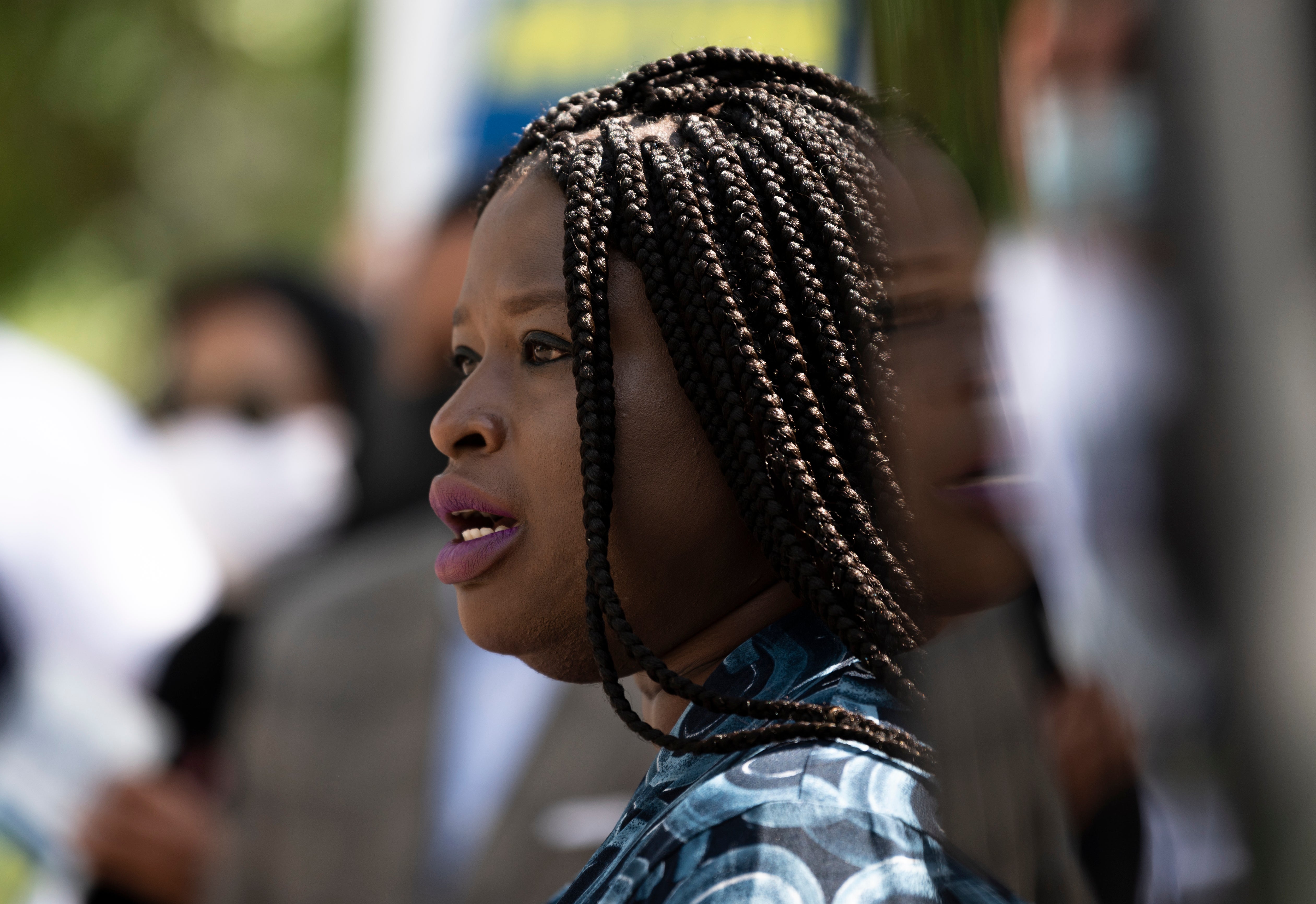
She shows up at press conferences with some of the sharpest questions ever hurled at officials. Then she holds her own events for the media, answering questions about her work and the demands she and other activists have of those officials – whether they be white or Black. Invariably, those demands are for transparency, accountability and justice for those who have suffered, or been killed, at the hands of police.
“In Minnesota we suffer from racism with a smile,” she said at one such event this week, outside the government centre complex in the centre of Minneapolis. “But we are standing here as a united force, putting our government on notice that we will not tolerate abuse at the hands of law enforcement, whether it be the National Guard, [or] the Hennepin County Sheriff.”
Read More:
She added: “We are demanding transformation, or you can expect to continue to be ‘uncomfortable’, and for us to continue to disrupt ‘business as usual’ in the state of Minnesota.”
Nekima Levy Armstrong, 44, executive director of Wayfinder Foundation and a former president of the Minneapolis NAACP, is a lawyer and a mother-of-four. She has said her involvement in the struggle for racial and economic justice deepened after the 2015 fatal shooting of a 24-year-old Black man, Jamar Clark, by officers from the Minneapolis Police Department (MPD).
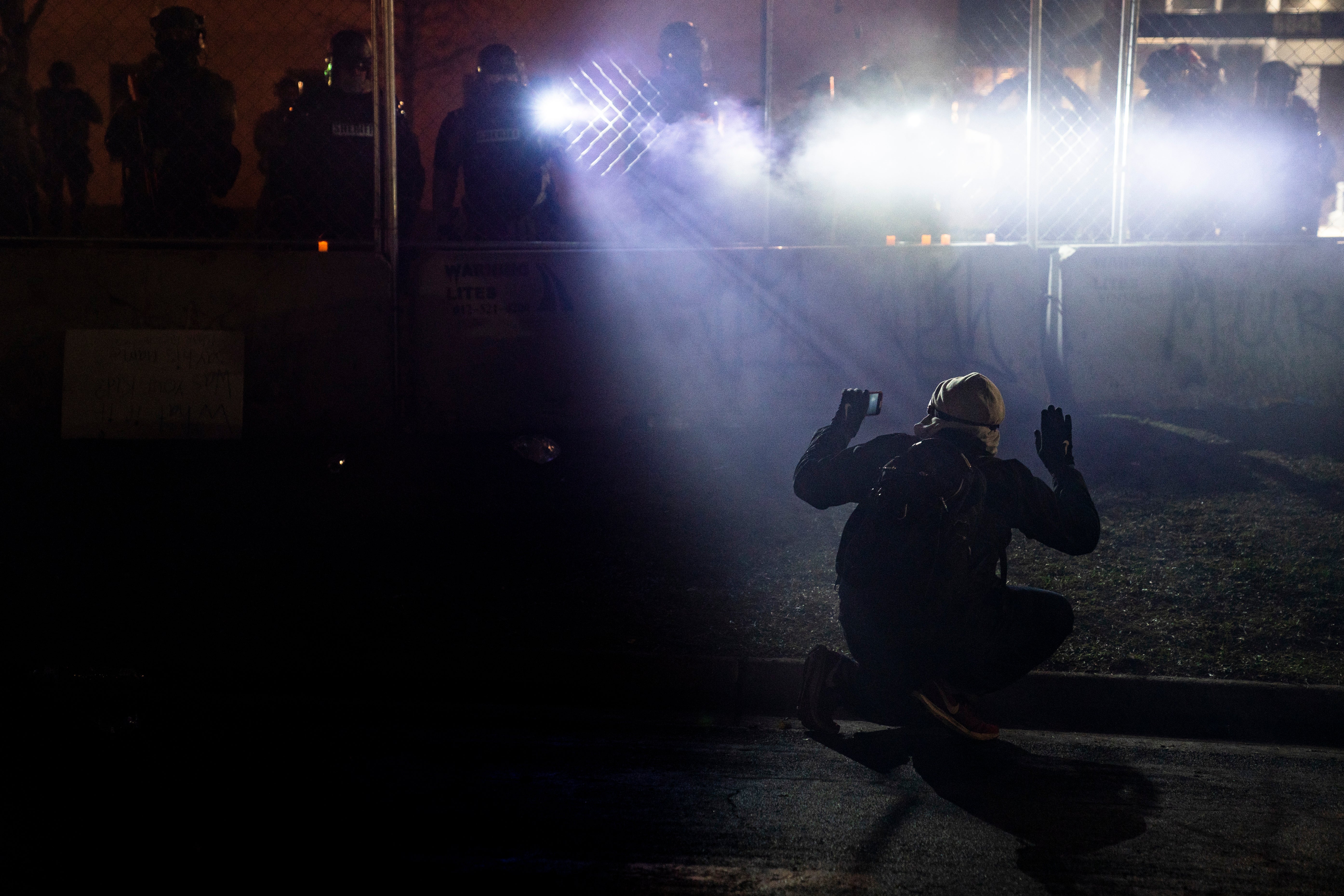
She joined those pressing for the officers to be charged, though they never were, and saw first hand the power of people protest after hundreds of demonstrators surrounded and occupied the area around the department’s 4th precinct for 18 days. The city eventually paid $200,000 to the family of the young man.
“I remember receiving a call from now chief [Medaria] Arradondo at about four o’clock in the morning, letting me know that a young man had been killed by police,” she told Minnesota Public Radio last year.
“And I could not go back to sleep. And then I looked on social media, and I saw that there had been dozens of witnesses who were treated like criminals at the scene. It just did not sit well with my spirit.”
She called her activist colleagues, asked them to meet her at the scene and started gathering testimony from witnesses, to help counter what she said was a false narrative projected by the police and investigators.
She added: “We just said enough is enough. We have to take a stand and fight back, alongside the community. And the people were ready.”
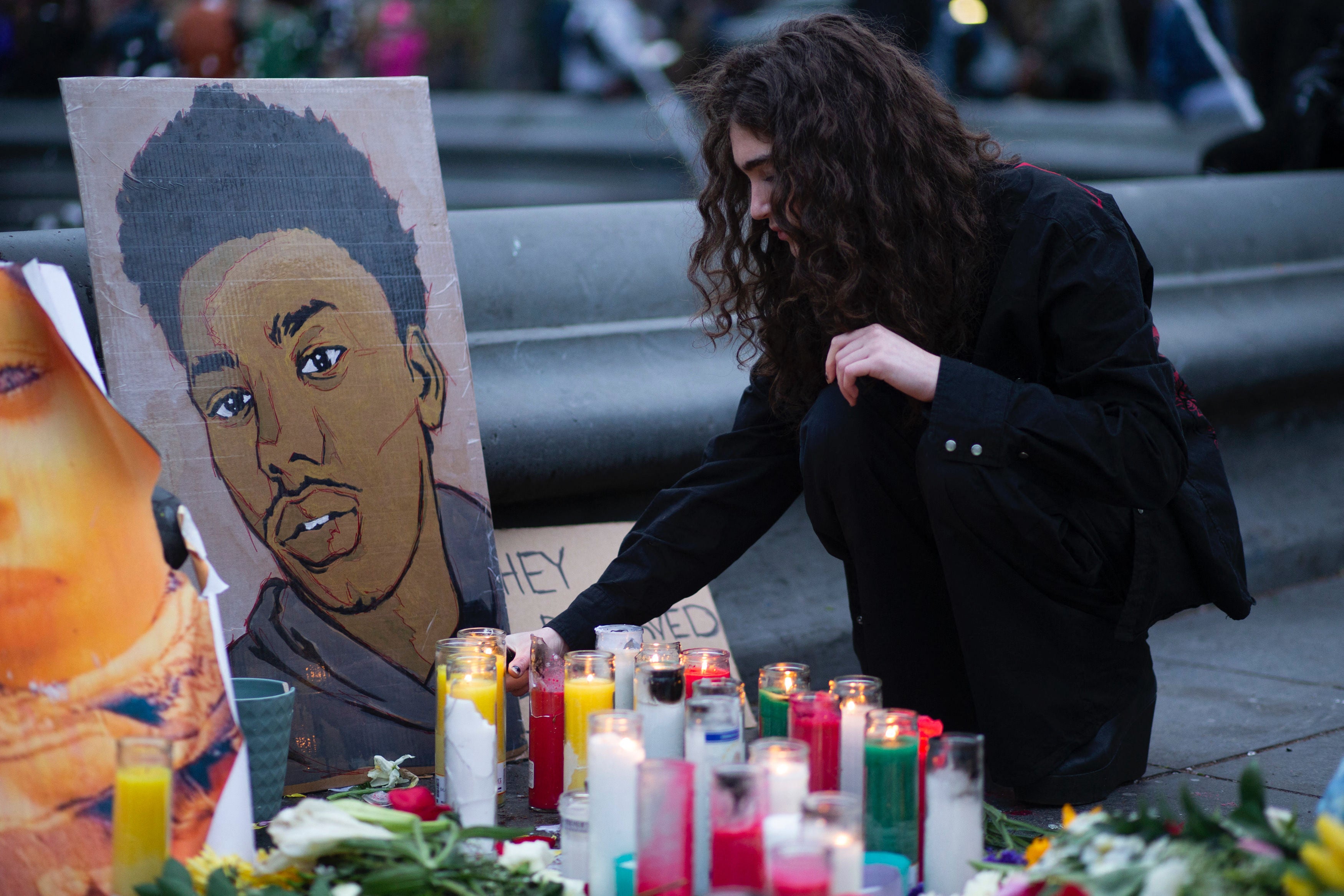
In recent days, as the Twin Cities area has awaited with trepidation the outcome of the trial of Derek Chauvin, one of the officers charged with killing George Floyd, and mourned and protested the fatal shooting of Daunte Wright, Armstrong has sought to join the dots – arguing that the two incidents, separated by more than 10 miles and 11 months – are inextricably linked by a society and criminal justice system that is inherently racist.
“A big part of it has to do with intentionally working to connect the dots and trying to look through the lens of history, in terms of how various systems have worked in collaboration to further the oppression of Black people,” she tells The Independent.
“It was much more obvious looking back historically; here it is much more covert, and it’s done with the smile.”
She adds: “So it takes intentionality as far as connecting the dots, looking at statistics and interfacing with the various systems to see what’s going on. And that is what my legal training has afforded me.”
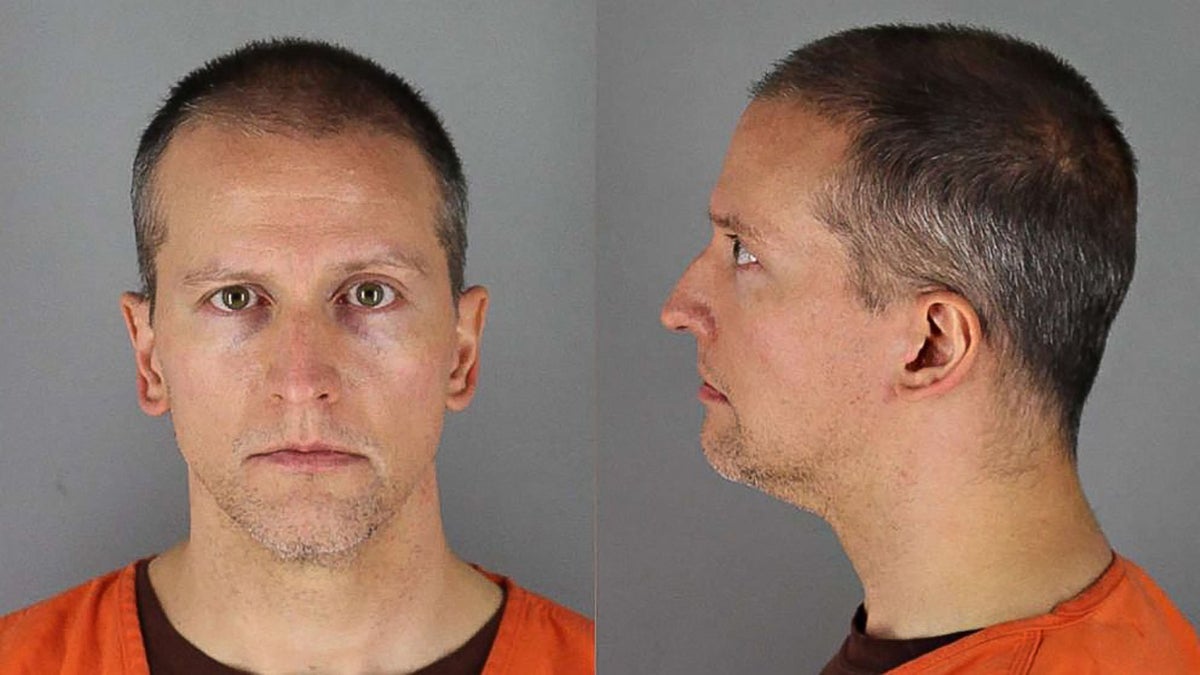
The Independent’s first conversation with Armstrong, who was born in Jackson, Mississippi, and moved to the Twin Cities in 2003 to take a job as an associate law professor at the University of St Thomas, had been to listen to her thoughts about the Chauvin trial, an event she said made her feel as if Floyd and the witnesses who watched him dying were themselves in the dock.
“The defence’s line of questioning ... he often inserts stereotypical statements about the bystanders being a distraction, being an unruly or rowdy crowd,” she said. “He’s clearly relying upon racial stereotypes to attempt to make the crowd out to be problem, even though they’re the heroes.”
She also dismissed claims made by city council members that they had tried to reform the city’s police force over the years.
“We have come to them on multiple occasions, pleading with them to use their power to transform the MPD. And they have refused to lift a finger throughout all their time here, over the years of people being killed,” she said.
“So the way I look at it, there needs to be a complete overhaul of the MPD. One of the elders in our community suggested that all the officers should have to reapply for their jobs.”
As it was, at the moment that conversation about the need to reform the police was wrapping up, another tragedy, another needless death of a young Black man at the hands of the police, was playing out in Brooklyn Center, a city of 30,000 people just to north west of where Floyd lost his life.
Wright’s mother, Katie Wright, alerted media to what had happened to her 20-year-old son, who had been shot after being pulled over by police in a traffic stop. The young man was on the phone to his mother just seconds before his life was taken.
“I heard scuffling, and I heard the police officers say, ‘Daunte, don’t run’, and then the other officer said, ‘Put the phone down’ and hung it up,” Wright said, standing in the street shortly after the incident at 2pm that Sunday.
“A minute later, I called again and his girlfriend answered – she was the passenger – and she said that he’d been shot, and she gave me a view of the driver’s side and my son was laying there lifeless.”
That night hundreds of protesters took to the streets demanding action – Armstrong among them. The day after she was among several community activists calling on Brooklyn Center mayor, Mike Elliott, to fire the officer involved in the shooting and the police chief.
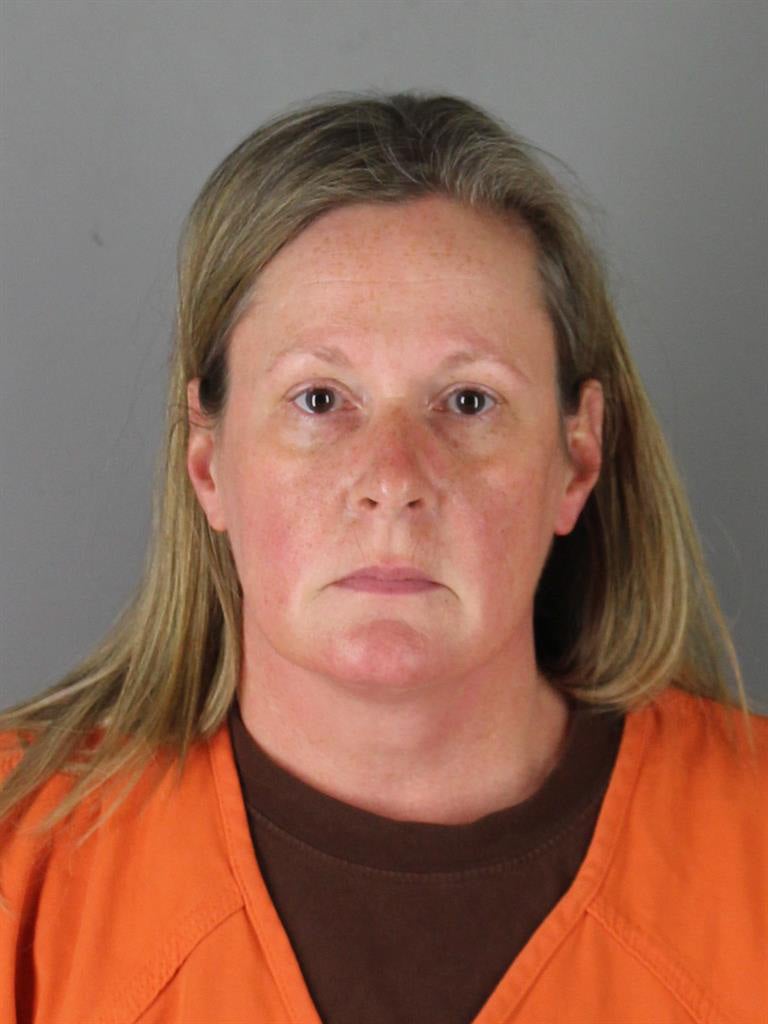
Police released body camera footage that showed Wright being stopped by officers, who claimed he was breaching the law by driving while having air fresheners dangling from his mirror.
At one point, a female officer, lated identified as Kim Potter, was heard to shout “Taser”, “Taser”, which is what police are trained to do before deploying the non-lethal electro-shock device. Almost immediately, it becomes clear she has drawn and fired her gun, not her Taser. “Holy shit, I just shot him.”
The young man’s car would travel three more blocks before coming to a halt. He was pronounced dead on the scene. Within days, both she and police chief Tim Gannon were out of the department, and 48-year-old Potter was charged with second-degree manslaughter.
The charging of Potter – who had worked on the force for more than 20 years, was a senior official of the police union and who has gone into hiding since being indicted – has not quelled the anger or frustration, and is an almost incidental issue to the broader demand for meaningful change.
It’s just non-stop. We are going to be here until they stop the killing. We want to stop this happening again
Two young women who were at a protest outside the Brooklyn Center Police Station on Thursday night, said there was no reason for demonstrators to stop showing up. “It’s just non-stop. We are going to be here until they stop the killing,” said Beneda, who was 20. Her friend, Kaylina, who was also 20, and was at her first protest, added: “We want to stop this happening again.”
Activists point out that while Democrats have controlled Minneapolis for many years and may have a progressive image or reputation, that only applies for white people.
By many measures – especially in regard to access to affordable housing – it is one of the most racially skewed cities in the nation. And while the deaths of Jamar Clark, George Floyd and Daunte Wright are now finally being talked about, there is a long and depressing history of Black people being killed by police in the state of Minnesota,
A database complied by the Star Tribune suggested that since 2000, a total of 207 people had been killed by police across the state. And while Chauvin, and three other Minneapolis officers were charged over Mr Floyd’s death, and while Potter was this week indicted for the shooting of Wright, to date, just one police officer has been convicted for a killing a member of the public.
That officer was Mohamed Noor, who in 2019 was found guilty of murder over the 2017 fatal shooting of Justine Damond, a white Australian-American woman.
The only officer to be charged and convicted is Mohamed Noor, and that was because he was a Black Muslim Somali man and she was a white affluent woman
Noor, who was born in Somalia, had believed his police vehicle was about to be ambushed and had let off a shot. “The only officer to be charged and convicted is Mohamed Noor, and that was because he was a Black Muslim Somali man and she was a white affluent woman,” said Armstrong, who studied at the University of Southern California, and then obtained a law degree from the University of Illinois College of Law.
Armstrong – who in 2017 was among several candidates who ran for mayor but who lost to Jacob Frey – and other activists claim Minnesota is the most racist state in the US, the “Jim Crow North”, where is it sometimes lightly veiled beneath “Midwestern friendliness”.
Does that make it harder to combat racism in a place such as Minnesota, rather than Mississippi? “It’s harder to confront, if you’re unwilling to be confrontational,” she says.
Read More:
She says that for many years people claiming to be on the side of change – she means so-called progressive Democrats in the state – did nothing more than sit in rooms, talking about change but getting nothing done. She says many Democrats have for many years taken the votes of black people for granted. An ongoing challenge is the power of the two-party system, and a lack of viable options.
Yet politics, and democratic action, is not simply about the ballot box. Peaceful protest is protected by the US constitution, which makes it a powerful force for change. “Finally, we’re just saying we’re going to disrupt business as usual,” says Ms Armstrong. “We’re going to take it to the streets, to the halls of power. We’re going to do what it takes.”
Join our commenting forum
Join thought-provoking conversations, follow other Independent readers and see their replies
Comments